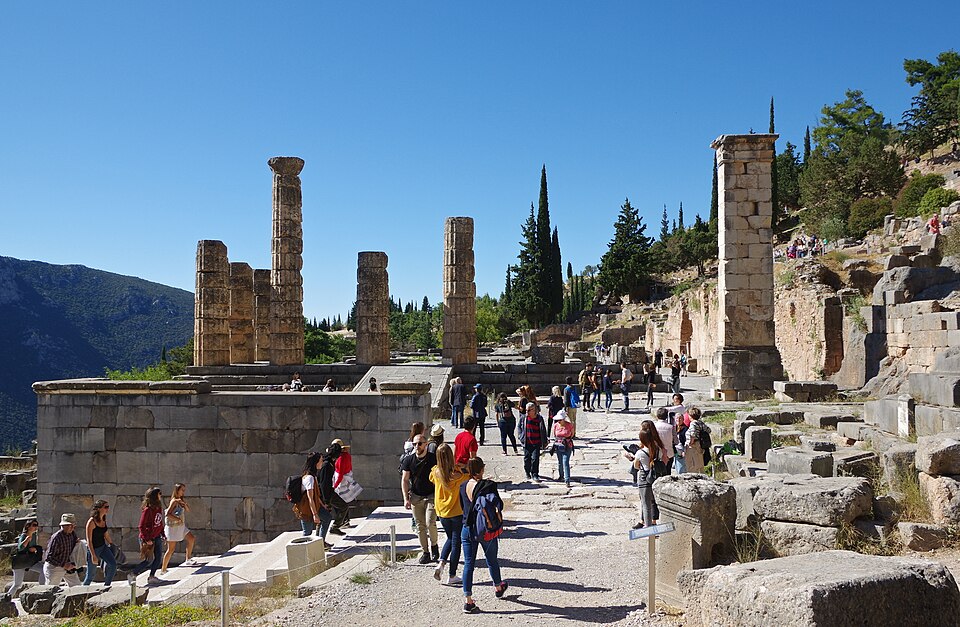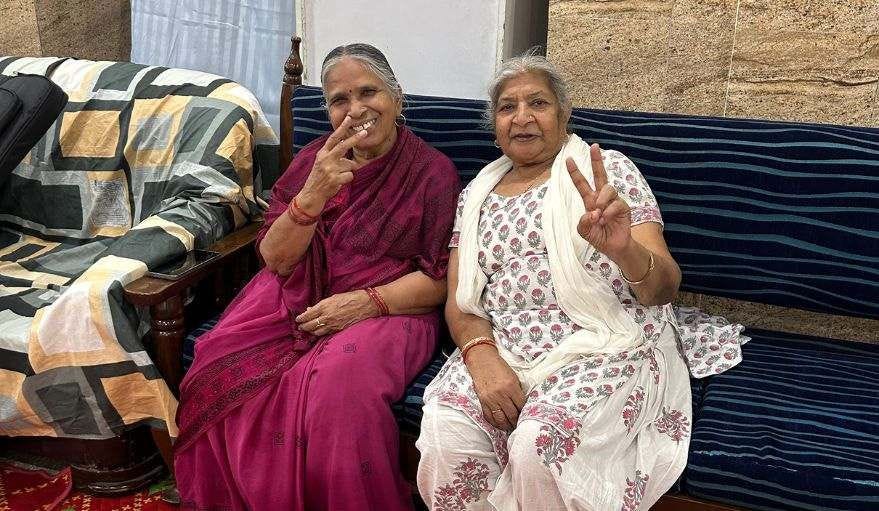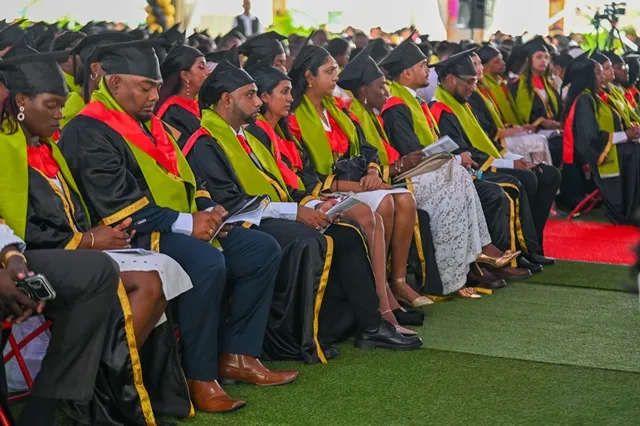Introduction: The Other Gold Rush
In a small Indigenous village deep in Guyana’s Rupununi savannah, the rhythmic beat of drums echoes under a canopy of stars. Tourists, having traveled hours by dirt road, sit enthralled around a crackling fire as Makushi elders share folklore passed down for generations. Scenes like this were once rare – Guyana’s remote cultural treasures remained largely hidden from the world. But today, as oil money floods the nation, an alternative boom is quietly taking shape in its hinterlands: a boom in cultural and community-led tourism. Across the regions, from the rainforest communities in Region 8 to coastal Afro-Guyanese villages, people are realizing that their heritage – their way of life – is perhaps their most precious asset in a rapidly changing country.
This is a story about under-covered facets of Guyana’s transformation. While skyscrapers rise in Georgetown and offshore rigs draw headlines, in the villages and regions a more intimate revolution is occurring. Communities are taking the reins of tourism and cultural enterprise, determined to ensure that development doesn’t steamroll their identity. The government, notably the PPP/C administration, has thrown support behind this effort in a way that aligns progress with preservation. The balancing act is delicate: how to modernize and diversify the economy while safeguarding and celebrating the rich tapestry of cultures that define Guyana. If done right, it could turn the country into a model for sustainable cultural tourism and give locals a stake in the new prosperity.

Empowering Indigenous Enterprise
Minister of Tourism Oneidge Walrond captured it well at a regional conference: “One of Guyana’s primary unique value propositions is the Indigenous community-led and owned tourism enterprises. By empowering our Indigenous people to take the reins of their own tourism ventures, we ensure their economic prosperity and the preservation of their culture.”. This statement isn’t mere rhetoric. In 2024, the ministry announced support for 20 indigenous communities to build community enterprises in tourism.
What does this look like on the ground? Take Surama, a Makushi village in the North Rupununi that was a pioneer years ago – it set up its own eco-lodge where villagers host guests, guide wildlife hikes, and share their traditions. That model has now spread. Villages like Rewa and Wowetta have established similar lodges or guesthouses, often managed by a village cooperative. Visitors might go birdwatching at dawn with a Makushi guide who knows every call of the rainforest, or learn traditional cassava bread making with community women. The revenue flows back to the village, funding schools and health posts, creating jobs so young people don’t have to migrate to the city. It’s tourism on the community’s terms – small-scale, culturally immersive, and locally owned.
The government’s role has been in training and seed funding. They’ve developed a Community-led Tourism Framework and Toolkit, essentially a guide to help villages plan and manage tourism in line with their values. Additionally, partnerships with organizations like the Guyana Tourism Authority and international bodies have provided training in hospitality and business skills. This aligns neatly with the Low Carbon Development Strategy 2030 which highlights eco-tourism as a pillar of a new low-carbon economy.
The results are promising. For example, just this past year, the village of Karasabai in Region 9, known for its population of rare harpy eagles, opened a simple lodge for birdwatchers. Tourists are trickling in, generating income in a place that previously had virtually no cash economy. Meanwhile, the cultural fabric – be it traditional dance, craft, or food – becomes an attraction rather than something to be shed in pursuit of modernization. It’s a subtle yet profound flip of the script: development through culture, not at the expense of it.
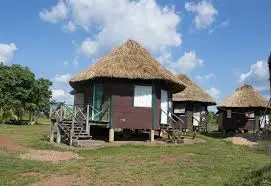
Crafting a Future from the Past
One of the most tangible connections between culture and commerce is traditional craft. Guyana’s indigenous communities excel in basketry, weaving, pottery, and carving – skills passed down and often imbued with spiritual meaning. Recognizing the potential, the government in 2024 floated an exciting idea: establishing a “permanent presence” for Guyanese indigenous crafts in Barbados. This emerged from the St. Barnabas Accord with Barbados, envisioning a duty-free zone at Caribbean ports for selling local crafts.
Imagine a boutique at the Bridgetown cruise terminal stocked year-round with Guyanese handmade cashew nut baskets from Yupukari, colorful Warrau hammocks, and ornate Lokono pottery. Such an outlet would expose regional and international buyers to Guyana’s heritage items, creating steady demand and income for the artisans back home. Minister Walrond noted the demand was already “far higher than supply” when Guyana sent crafts to a Barbados agro-fest. So now they plan to scale up production and training to meet it, without losing authenticity.
The initiative goes hand-in-hand with efforts at home. In the Amerindian village of Santa Aratack (Region 3), a vibrant craft center showcases intricate straw weaving and beadwork. The government launched a training program there on bamboo and rattan product development, in partnership with experts from China. The aim is twofold: improve designs for broader appeal, and empower artisans with new skills while maintaining the traditional techniques. As Minister Walrond said, it’s about empowering individuals and laying groundwork for self-sustainability.
Notably, she explicitly tied it to the administration’s philosophy: “The PPP/C government is dedicated to enhancing human resource capacity across the nation’s indigenous communities, recognizing their immense potential.”. This is a critical point. Rather than see indigenous folk as backward or needing charity, the policy treats them as talented entrepreneurs who, with a bit of support, can compete in global niche markets. It’s a refreshing departure from the paternalism of the past.
Heritage Tourism: Beyond Indigenous Communities
While indigenous culture is a focal point (given its uniqueness and allure for eco-tourists), Guyana’s cultural tourism extends to other facets: the heritage of its Afro-Guyanese villages, Indo-Guyanese festivals, and even the diaspora’s role in cultural revival.
For instance, on the Essequibo Coast lies the village of Unity, an Afro-Guyanese community that has turned its annual Emancipation Day celebration into a tourist draw. Visitors now come to experience the drumming, the vivid folk dances like the Queh Queh, and to taste the delicious creole cuisine at food stalls. The government’s Department of Culture often supports these local festivals with small grants or marketing, recognizing that regional culture is an asset. Such events not only generate income but bolster pride among residents, ensuring younger generations value their heritage.
Similarly, in Berbice (Region 6), the sugar estate community of Albion has a rich Indian cultural scene, with temples and yearly Diwali melas (fairs). With gentle prodding, these too are being packaged to welcome outsiders. The idea isn’t mass tourism – it’s a trickle of interested visitors that validates and funds the preservation of traditions. A few diaspora Guyanese from New York timing their trip to coincide with Phagwah (Holi) in their ancestral village, for example, brings both money and an appreciative audience to the local festivities.
The creative industries grant program (which we’ll discuss more in another article) also plays a part in cultural preservation. Some grantees have been traditional storytellers or musicians wanting to record folk songs. Others have started heritage tours, like a young Guyanese who offers “street food and history” walks in Georgetown, telling stories of the city’s colonial Dutch architecture and Creole culture while sampling local fare. Such micro-initiatives add up to a richer tourism product anchored in authenticity.
Diaspora and Youth: Guardians of Culture
Interestingly, youth migration – often a threat to cultural continuity – has an unexpected role here. Many second-generation diaspora youth, born in Toronto or Brooklyn, are reconnecting with their roots through tourism and media. Social media pages run by young Guyanese overseas celebrate folk recipes, slang, and customs, inadvertently marketing Guyanese culture to the world. Some of these youths visit and volunteer in their parents’ villages, helping set up websites for community lodges or promote crafts on Etsy. The diaspora is becoming a bridge connecting local heritage to global markets.
At the same time, to keep local youth engaged, cultural education is being ramped up. The government and NGOs sponsor heritage workshops – e.g., teaching Warrau youth the craft of canoe making or organizing “heritage games” in Hinterland Student dormitories in the city. The idea is to instill pride so that even as modernity encroaches, the lure of their identity remains strong. If young people see that they can make a decent living (or at least supplemental income) through cultural avenues – be it performing arts, guiding tours, or craft – they may be less inclined to drift entirely into the anonymous urban workforce.
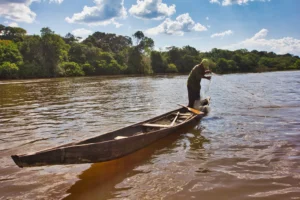
Challenges: Authenticity vs. Disneyfication
Of course, there are challenges in this cultural renaissance through tourism. One concern: will culture be commodified or staged just to please tourists? It’s a fine line. For now, numbers are small enough that performances or village life haven’t become artificial shows. Visitors participate in real daily activities. But as success grows, there’s the temptation to create a “Disney” version of culture – which can erode meaning. The guardians of authenticity will have to be the communities themselves, with guidance from anthropologists and cultural experts. The government’s role should also include ensuring ethical tourism practices – for example, regulating that operators don’t exploit communities or that sacred rituals aren’t trivialized.
There’s also a question of capacity. Many of these communities are tiny, and not everyone wants to be a tour guide or artisan. Over-reliance on tourism can be risky if trends change. That’s why concurrently they’re encouraged to pursue other sustainable livelihoods (like agro-forestry or renewable energy projects via the carbon funds). The cultural enterprises are one stream, not the whole river.
Language barriers and infrastructure pose issues too. Getting to some of these places is an adventure in itself – which some travelers love, but others shy away from. Government investment in better roads and small airstrips for tourism can help, but too much access could also spoil the allure. It’s that delicate balance again.
Subtle State Support, Not Propaganda
The PPP-led government has been wise to frame its support in terms of pride and progress, not propaganda. You’ll notice ministers often highlight how these initiatives tie into national strategies like LCDS or job creation, rather than overtly saying “look what the government did for you.” This subtlety keeps the focus on the communities and culture, avoiding cynicism that it’s all a political show.
That said, the alignment is clear: a thriving, culturally rich hinterland reflects well on the administration’s One Guyana ethos – a platform of unity and inclusive growth. By spotlighting heritage, the PPP/C distinguishes itself from past approaches that may have overlooked indigenous and rural contributions. It’s an approach that yields political capital without being overt: deliver results that locals value (income, recognition) and goodwill follows.
Case Study: Rewa – A Village Transformed by Eco-Culture Tourism
Consider Rewa, an indigenous village by a majestic river of the same name. A decade ago it was a sleepy place of subsistence farmers. Today, Rewa Eco-Lodge is an award-winning destination lauded in travel magazines for sport fishing (catch-and-release arapaima) and cultural immersion. The community reports that annually over 200 visitors come – modest, yes, but enough to sustain jobs for dozens of families. Importantly, migration from Rewa has dropped; young people choose to work as guides or hospitality staff rather than leave for the city. The villagers have also revived certain practices, like traditional dances and an annual heritage festival, spurred by visitor interest.
The government helped Rewa with training and a small grant for solar panels at the lodge (so operations are fully green). Now Rewa stands as a model for other communities. The lesson: when people can make a good livelihood from their culture and environment, they become its fiercest protectors. The rainforest around Rewa remains pristine, partly because the community knows its intactness is what draws eco-tourists. They actively patrol against illegal loggers or poachers. This is local empowerment in action – aligning economic incentive with conservation and cultural preservation.
It’s no surprise the Guyana Tourism Authority is marketing the country as “South America’s best kept secret – where nature and culture meet.” They see that Guyana’s competitive edge is precisely its authentic cultures living in one of the most intact natural environments on earth. Few places can offer a combination of spotting a jaguar in the wild by afternoon and participating in a centuries-old indigenous ceremony by evening.
Regional Identity in a Modern Guyana
As Guyana’s infrastructure links the coast and interior (new roads, bridges, internet), one might fear homogenization. But these cultural initiatives are in fact strengthening regional identities within Guyana. The folks in Wakapau (an Arawak community on the Atlantic coast) have a renewed pride in being “the cassava bread capital” as they host workshops on cassava processing. Lindeners (from Region 10) are promoting their bauxite mining heritage with a museum and mine tours, embracing that industrial history as part of culture. In Essequibo islands, Dutch colonial ruins are being spruced up for tours, reconnecting people to a neglected piece of their past.
This mosaic of regional culture is a counterweight to the hyper-focus on Georgetown and oil. It reminds the nation that development is not one-size-fits-all. A rising GDP can mean a growing arts scene in Berbice, a flourishing craft market in Moruca, not just new skyscrapers in the capital. There’s a quiet recalibration of what progress looks like.
Conclusion: Culture as the Soul of Progress
In the grand story of Guyana’s transformation, culture and heritage often get footnoted while oil and GDP grab the headlines. But travel the country, and you realize culture is the soul of this progress – the invisible thread ensuring that as the nation hurtles forward, it remains itself. The PPP/C government’s subtle but substantial backing of cultural industries and community tourism suggests a governance approach that values this soul. It’s not altruism alone; there’s savvy recognition that culture can be an economic driver and a social stabilizer.
The coming years will test how well this model holds up. When the novelty wears off or if global travel fluctuates, will communities stick with these enterprises? Will the next generation carry the mantle? The hopeful signs are there: institutional support, growing market interest, and most importantly, local buy-in.
Guyana’s motto is “One People, One Nation, One Destiny.” That unity doesn’t erase the diverse strands of its people – Afro, Indo, Indigenous, European, Chinese, Portuguese – rather it weaves them into a rich tapestry. By investing in that tapestry, Guyana is ensuring its destiny isn’t just measured in barrels and dollars, but in the strength of its identity and the happiness of its people living their truths.
As a traveler, I’ve been moved seeing an elder’s eyes light up when a foreign guest tries on a handwoven tibisiri hat and marvels at its craftsmanship, or when schoolchildren perform an ancestral dance and get thunderous applause from an audience of locals and visitors alike. These moments affirm that development can uplift culture, not bury it. In Guyana’s journey from poverty to prosperity, this might be one of the most underappreciated wins – a nation that modernizes yet keeps its soul intact.
- The Future of Financial Literacy in Guyana: A Government-Driven Initiative for Sustainable Growth
- Dozens Charged After Unrest Over Girl’s Drowning – Jagdeo Blames Opposition for “Fear Tactics”
- Gov’t Urges Illegal Guyanese in US to Return Amid Crackdown
- Sports: Golden Jaguars Bank on Youth as Glasgow Shines in World Cup Qualifiers
